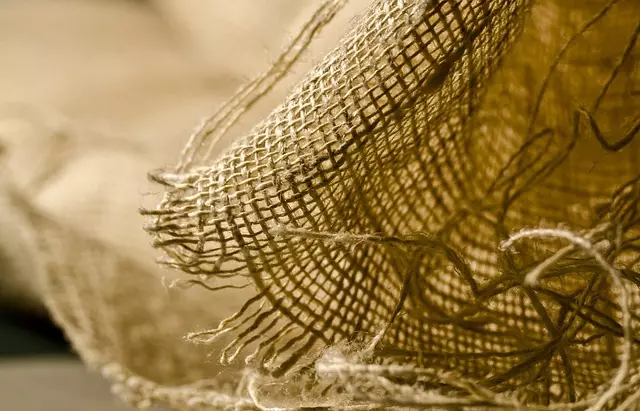Muscle soreness, particularly Delayed Onset Muscle Soreness (DOMS), often results from physical activity and is addressed through various remedies, with kratom emerging as a natural option due to its analgesic properties. Kratom, containing alkaloids like mitragynine and 7-hydroxymitragynine, engages with opioid receptors for pain relief. However, it's crucial to approach its use with caution, considering potential side effects and the risk of dependence. The legality of kratom varies by region, so it's essential to check local laws before purchase. When seeking where can I buy kratom locally, options include herbal shops, health food stores, and specialty supplement retailers that uphold high standards for product quality and ethical sourcing. For the best results, prioritize vendors following Good Manufacturing Practices (GMP) and providing third-party lab test results. Consultation with a healthcare provider is recommended to assess the risks and benefits and to consider whether kratom is an appropriate treatment for muscle soreness, alongside evaluating other available options.
Muscle soreness can be a persistent challenge for both athletes and casual workout enthusiasts, often hindering recovery and performance. Whether from intense training sessions or a particularly strenuous activity, the discomfort can significantly impact daily life. Enter kratom, a botanical ally that has garnered attention for its potential relief properties. This article delves into the science behind muscle soreness, explores how kratom can play a role in alleviating this discomfort, and guides you through selecting the right strain for muscle recovery. Additionally, it provides practical advice on integrating kratom safely into your post-workout regimen and offers tips on where to buy kratom locally, ensuring you make informed choices. However, as with any supplement, one must be aware of potential side effects and considerations to use kratom responsibly for soreness relief.
- Understanding Muscle Soreness and Its Causes
- The Role of Kratom in Muscle Soreness Relief
- Kratom Strains for Muscle Recovery: A Guide
- How to Safely Incorporate Kratom into Your Post-Workout Routine
- Where to Buy Kratom Locally: Tips and Recommendations
- Potential Side Effects and Considerations When Using Kratom for Soreness
Understanding Muscle Soreness and Its Causes

Muscle soreness, a common experience for individuals engaged in physical activity, manifests as pain or tenderness in the muscle tissues. It can arise from various causes, with exercise-induced soreness being particularly prevalent among those who have recently intensified their workout routine or tried new exercises. This type of soreness is often due to microscopic tears in the muscle fibers, a natural response to the stress of physical exertion, and is commonly known as Delayed Onset Muscle Soreness (DOMS). Additionally, muscle soreness can be a result of overuse injuries or from acute trauma like strains or sprains. Understanding the origin of muscle soreness is crucial for addressing it effectively.
For those seeking relief, natural remedies such as kratom have gained attention. Kratom, derived from the leaves of the Mitragyna speciosa tree, has been traditionally used in Southeast Asia for its potential pain-relieving properties. It contains a variety of alkaloids, including mitraphylline and 7-hydroxymitragynine, which may interact with the body’s opioid receptors to provide analgesic effects. Those interested in incorporating kratom into their muscle soreness management regimen may consider where to buy kratom locally. Local vendors or specialty stores can offer a range of kratom strains, each with its own alkaloid profile that might influence the degree of pain relief experienced. It’s important for individuals to consult with healthcare professionals before using kratom, as it can interact with other medications and may have side effects. Proper dosing and careful consideration of the product’s quality are essential when exploring kratom as a remedy for muscle soreness.
The Role of Kratom in Muscle Soreness Relief

Kratom, a plant native to Southeast Asia, has garnered attention for its potential role in alleviating muscle soreness. The active compounds found in kratom leaves, namely mitragynine and 7-hydroxymitragynine, are believed to interact with the body’s opioid receptors, which can lead to pain relief. For individuals seeking muscle soreness relief, kratom may offer a natural alternative to traditional pharmaceuticals. Its analgesic properties make it a subject of interest for those recovering from intense physical activity or suffering from chronic pain conditions. When considering the use of kratom for this purpose, it’s important to source it responsibly. Those interested in incorporating kratom into their wellness routine can explore local herbal shops, specialty vitamin stores, or smoke shops where knowledgeable staff can guide them on product selection. Additionally, with the growing interest in natural remedies, some regions have authorized the sale of kratom products within regulated environments. For those wondering where to buy kratom locally, it’s advisable to research local regulations and reputable vendors to ensure a safe and legal experience. Always consult with a healthcare provider before starting any new supplement regimen, especially if you have existing health concerns or are taking other medications.
Kratom Strains for Muscle Recovery: A Guide

When exploring the realm of kratom for muscle recovery, it’s crucial to familiarize oneself with the various strains available and their distinct properties. Maeng Da kratom is often celebrated for its balanced alkaloid profile, which may offer both stimulating and soothing effects, potentially aiding in post-exercise muscle soreness relief. This strain is commonly found in many reputable kratom vendors and can be sourced locally or online. Another potent option is Bali kratom, known for its sedating qualities, which might be particularly beneficial for individuals experiencing significant muscle fatigue or discomfort. It’s available at many outlets where people buy kratom, including specialized stores and head shops.
For those seeking a more energizing approach to muscle recovery, White Vein strains such as Borneo or Horn kratom might be the answer. These variants are known for their invigorating effects, which can help in powering through intense workouts while minimizing subsequent soreness. Red Vein strains like Red Bali or Red Thai are favored for their relaxing and pain-relieving properties, making them ideal for use after a grueling training session. Prospective users interested in where to buy kratom locally can start by visiting natural supplement stores, herbal shops, or specialty kratom boutiques, where knowledgeable staff can guide them through the selection process based on their specific needs and preferences. Always ensure to purchase from responsible vendors who comply with local laws and regulations regarding the sale of kratom products.
How to Safely Incorporate Kratom into Your Post-Workout Routine

When incorporating kratom into a post-workout routine for muscle soreness relief, it’s crucial to approach its use with caution and informed guidance. Kratom, derived from the leaves of the Mitragyna speciosa tree, is known for its potential therapeutic properties, particularly alkaloids like mitragynine and 7-hydroxymitragynine. These compounds have been associated with pain relief and muscle relaxation effects, which can be beneficial after an intense workout.
To safely integrate kratom into your regimen, start by determining the appropriate dosage based on your body’s response and experience level. It’s advisable to purchase high-quality kratom from reputable sources; for those interested in where to buy kratom locally, local herbal shops, health food stores, or specialty suppliers may carry it. Alternatively, online vendors can provide a variety of strains, ensuring you find one that aligns with your needs. Always adhere to the recommended dosage to avoid adverse effects and ensure compatibility with your body’s chemistry. Additionally, be mindful of the timing; kratom should be consumed post-workout, after your body has had time to cool down and when muscle soreness is most pronounced for optimal relief effects. It’s also important to consult with a healthcare provider before adding kratom to your routine, particularly if you have existing health conditions or are taking other medications. This step not only ensures your safety but also helps in tailoring the best approach for your specific situation.
Where to Buy Kratom Locally: Tips and Recommendations

When seeking to purchase kratom locally, it’s crucial to prioritize quality and legality. Kratom is a botanical product derived from the leaves of the Mitragyna speciosa tree, and its availability can vary by region due to differing legal statuses across the United States. To ensure compliance with local laws, always verify that kratom is legal in your area before making a purchase. Reputable vendors are often found in health food stores, herbal shops, or specialty supplement retailers. These establishments typically adhere to strict standards for product quality and sourcing. When you visit a store, look for staff who can provide detailed information about the kratom strains, their origins, and any lab testing results that confirm purity and potency. This knowledgeable guidance ensures you’re making an informed decision about the kratom you purchase.
For those preferring a more direct approach, local farmer’s markets or bulk herb suppliers might offer kratom. However, it’s imperative to verify the authenticity of the product and the vendor’s reputation. Authentic kratom should be packaged in a way that preserves its freshness and potency. Additionally, consider reaching out to local community groups or forums where discussions about natural remedies are common. Members might share their experiences with local kratom suppliers, providing valuable insights into where to buy kratom locally. Always prioritize vendors who follow Good Manufacturing Practices (GMP) and have third-party lab testing results available for review. This due diligence can help mitigate the risk of purchasing adulterated or substandard products.
Potential Side Effects and Considerations When Using Kratom for Soreness

When considering the use of kratom for muscle soreness relief, it’s crucial to be aware of its potential side effects and to weigh them against the benefits. Kratom, derived from the leaves of Mitragyna speciosa, interacts with the brain by mimicking the effects of some narcotic drugs, which can lead to analgesic properties that may alleviate pain. However, like all substances with medicinal effects, kratom use is not without risks. Common side effects include nausea, constipation, and a decrease in appetite. At higher doses, individuals may experience more severe side effects such as dizziness, dry mouth, and itching. Long-term use can result in psychological dependence, and there have been reports of withdrawal symptoms upon cessation. It’s also important to note that the legal status of kratom varies by region, and in some places, it is subject to strict regulations or outright bans. Those interested in purchasing kratom locally should research their jurisdiction’s laws to ensure compliance with local regulations. If considering kratom for muscle soreness, it’s advisable to consult with a healthcare provider to discuss the potential benefits and risks, and to explore alternative treatments that may be more appropriate or safer for your specific condition. Safety and legality should always be at the forefront when exploring the use of kratom as a natural remedy for pain relief.
Muscle soreness, a common experience among those who engage in physical activity, can be effectively managed with natural remedies like kratom. This article has explored the origins of muscle soreness, its various causes, and how certain strains of kratom may offer relief. By understanding the role of kratom in muscle recovery and learning how to safely integrate it into your post-workout routine, you can potentially alleviate discomfort. For those interested in exploring this option, the guide on selecting kratom strains for recovery, coupled with tips on where to buy kratom locally, provides a clear path to experiment with its benefits. However, it’s crucial to be aware of the potential side effects and to approach its use with caution and informed consideration. As you consider incorporating kratom into your wellness regimen, always prioritize safe and responsible use, and consult with healthcare professionals as needed.






